Artificial Intelligence : Mining data for CO2 reductions
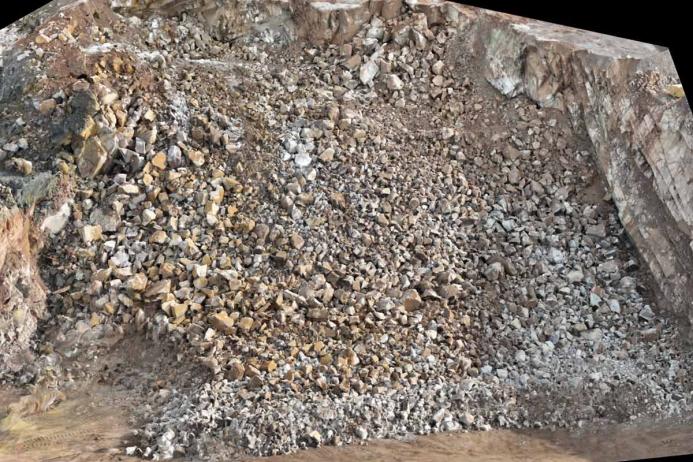
3D drone model of Mountsorrel blast pile surveyed by Rajen Gupta, higher apprentice - operations at Tarmac's Mountsorrel Quarry
First published in the September 2024 issue of Quarry Management
AI's ability to identify patterns and abstractions from data make it ideal for understanding complex processes in mineral processing
Many of us may have tentatively dabbled with Artificial Intelligence (AI), perhaps to generate a self-image for use on social media or help write a short letter or report. Nevertheless, its use in risk-managed businesses, such as quarrying, where real-world dynamics and people are involved, has perhaps been viewed with more scepticism.
The reasons are very understandable; AI not being properly understood; not knowing appropriate implementations for its use; little willingness to test it due to lack of understanding or perceived prohibitive costs; even simply the use of the word artificial being conflated in the mind with not being real and, therefore, not to be trusted.
Yet, as a sector working with huge scale and volumes, the minerals products industry has so much data that needs attention. Consequently, AI in quarrying has untold potential.
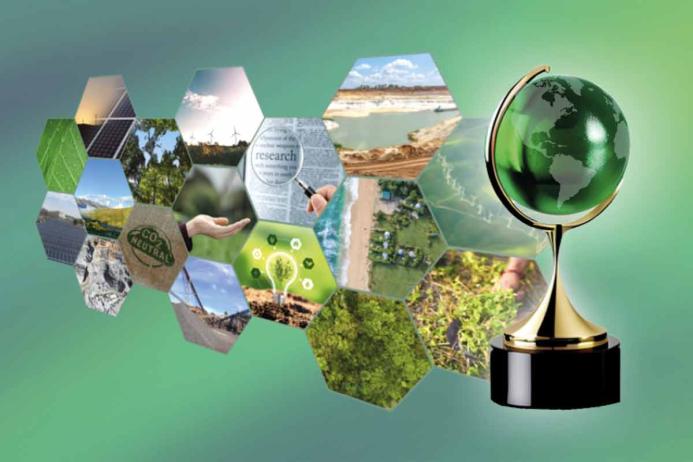
IQ Emerald Challenge
In 2023, such potential won the Institute of Quarrying Emerald Challenge – an initiative created to invite the mineral products sector to test innovative, environmentally focused ideas that could help the industry on its path to Net Zero. The Emerald Challenge grant is there to support research and development into new processes or concepts to help deliver better performance or deliver existing technologies within a new context for the sector.
Before looking at the winning work of Ground Engineering Applied Research Services (GEARS) in joint venture with New Gradient and its early adoption and consequential development investment by Tarmac at their Mountsorrel Quarry, first it is useful to try to better understand what is meant by AI, its potential, and the growth of data.
AI is an expanding frontier
There is no doubt that the use of AI is growing. The AI market amounted to around US$200 billion in 2023 and is expected to grow well beyond that to more than US$1.8 trillion by 2030.
The more global data surges, the more the need for digital intelligence to extract trends from this data and the greater AI’s value in doing the work that would otherwise be an insurmountable challenge for human resources.
Artificial intelligence already, sometimes invisibly, permeates extensive areas of our lives; for instance, debugging code, camera filters on our phones, responding as chatbots for customer service.
AI has proven extremely useful in other extractive industries and industrial sectors. For example, AI is now used extensively in new oil field and precious metals exploration, in cases such as safety checks for identifying personnel not wearing required PPE.
AI’s predictive value is transformative
Whilst data analysis is often a process of review of what has happened, the transformative value of AI is in its ability to predict, using that analysis to discover patterns and consequently devise better ways to do things. Improvements in efficiency that reduce cost and increase knowledge.
Suddenly, AI becomes more exciting, and business wants to know what it can do.
More than just data benefits
AI’s benefits extend beyond data analysis. It reduces human error, automates mundane tasks, and aids in quick decision-making. AI systems perform hazardous tasks and improve workflows. Furthermore, AI does not need sleep, it operates 24h a day, seven days a week, offering unparalleled productivity.
That does not mean that AI can replace humans entirely. Despite fears of AI replacing human jobs, the growing volume of data necessitates skilled data analysts. With 90% of the world’s data generated in the last two years and expected data growth of 150% by 2025, AI tools augment rather than replace human expertise. By automating repetitive tasks, AI allows data scientists to focus on more complex analyses from its output.
The need for a robust process
Importantly, AI relies on good-quality data, well-sourced, accurate, and secure. Bad data will produce bad AI results. Creating and leveraging reliable AI systems involves:
Data collection: Gathering data from diverse sources is essential to train AI algorithms effectively.
Data cleaning: The cleaner the data, the more valuable the insights. AI assists in eliminating errors, managing empty values, and normalizing data.
Model training: An AI model must be trained on the selected data, tuning parameters to make sure the model does not over-fit and offers representative and robust predictions.
Model deployment: AI models must be optimized for their specific deployment use case, whether this be cloud or edge devices, a model must be optimized in such a way to reduce inference cost.
Model inference: Once deployed the model can be run on a continuous stream of data offering intelligent and robust predictions.
Data-driven decision-making: Leveraging the outputs of AI models leads to faster, more accurate decisions. Predictive analytics can foresee potential issues, allowing businesses to address them proactively.
Further reading regarding the use of AI in mining; Insights and ethical considerations is available, along with comment on AI machine learning and autonomous technology.
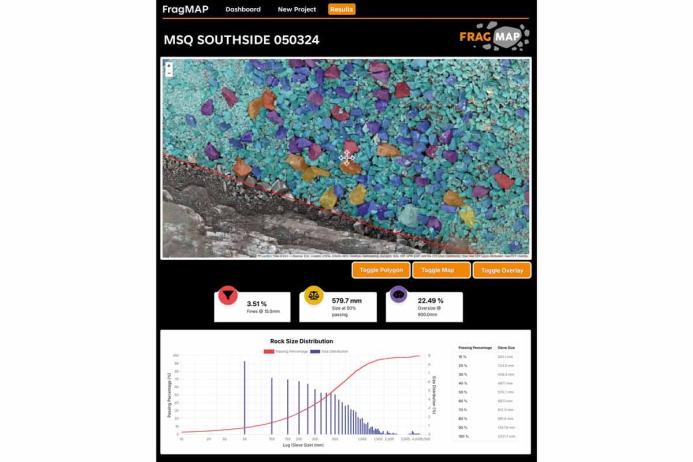
Trailblazing with AI: Blasting down CO2 at Mountsorrel Quarry
During the 2023 Emerald Challenge, the Institute of Quarrying requested submissions from the sector for development projects with the potential to show a positive environmental impact and contribute to the sustainability of the industry.
One of the winners was a collaboration between GEARS, New Gradient, and Tarmac.
The team presented their initial hypothesis on the CO2 impact of poor blasting quality. Their idea was to undertake a project whereby cost-effective AI solutions could be developed and implemented to measure the impact of the blast design on the entire process. The aim was to reduce CO2 emissions using Tarmac’s Mountsorrel Quarry as a test case. This would serve as an example for the UK hard rock quarrying sector.
Additionally, this could, in part, trailblaze how to use AI to address more ‘mine-to-mill’ operational efficiencies. AI’s capacity to understand complex, data-heavy work could be a quicker, easier, and more accessible route to mine-to-mill operational improvements.
CO2 emissions in UK quarries
Hard rock quarries produce between 2.5kg and 4kg of CO2 per tonne, primarily from diesel-powered load-and-haul equipment and energy-intensive processing plants. Recognizing the economic constraints and logistical impracticality of immediate replacement of mobile plant and processing plant with new plant powered by renewable energy, GEARS shifted focus to optimizing existing operations, particularly through improved blast fragmentation.
The team considered that blasting, despite being essential, is costly (often 10–15% of total production costs) and often optimized solely for expense reduction, which can compromise blast quality and increase ™ overall CO2 emissions. Therefore, without precise measurement of blast fragmentation, the impact on CO2 emissions and total operational costs was unclear.
By using AI, GEARS believed precise measurement would be possible. With such high costs blasting is often being targeted to reduce cost, but often to the detriment of good fragmentation. Without accurate methods of measuring the quality of fragmentation from blasting, it is impossible to assess fragmentations influence on CO2 emissions and impact on the total operational cost.
Why Mountsorrel Quarry?
Mountsorrel Quarry, a flagship Tarmac site, was chosen due to its high production levels, the recent addition of a new primary crusher plant and mobile plant telemetry system. The quarry’s potential for significant CO2 and cost savings made it an ideal location for the project.
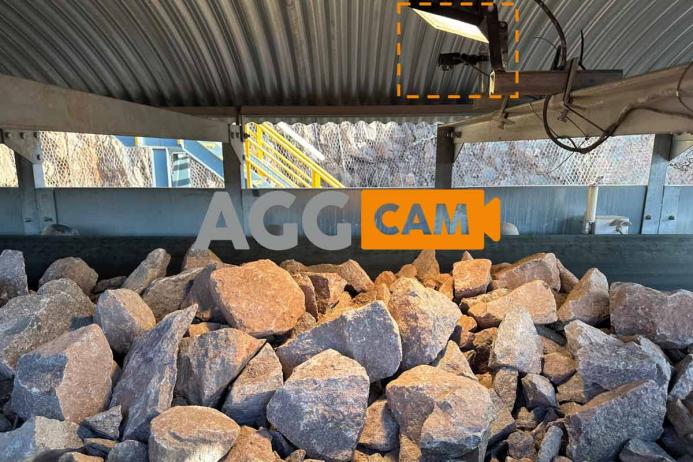
AI rationale and data gathering
AI’s ability to identify patterns and abstractions from data make it ideal for understanding complex processes such as the optimization of mineral processing. Machine learning, a subset of AI, can learn from data to make predictions, thus facilitating intelligent decision-making. Additionally, AI allowed for data gathering at a frequency and accuracy otherwise not possible with just humans, allowing for tighter feedback loops. Acting on this data makes it possible to optimize processes in a way that would otherwise be impossible.
Drill and blast process: New Gradient used their AI-driven tool, FragMAP, via drone imagery and AI computer vision to measure rock sizes in blast piles. This provided data on blast quality, enabling feedback loops for optimization. GEARS and New Gradient, with access to a wide range of blast design data, some of which was provided by Tarmac, developed BlastFRAG, an AI programme that predicts blast pile outcomes based on input factors, aiding in selecting optimal blast designs.
Crushing and screening: Monitoring the particle size distribution (grading) through the crushing and screening process is challenging yet crucial. Incorrect settings can lead to increased energy usage and reduced throughput. AggCAM, is another AI tool developed by New Gradient, to continuously monitor grading and aggregate volume on conveyor belts, facilitating optimization of the crushing process and linking blast pile quality to downstream processing efficiency. A fully operational prototype of AggCAM is deployed on the conveyor downstream of the new primary crusher at Mountsorrel.
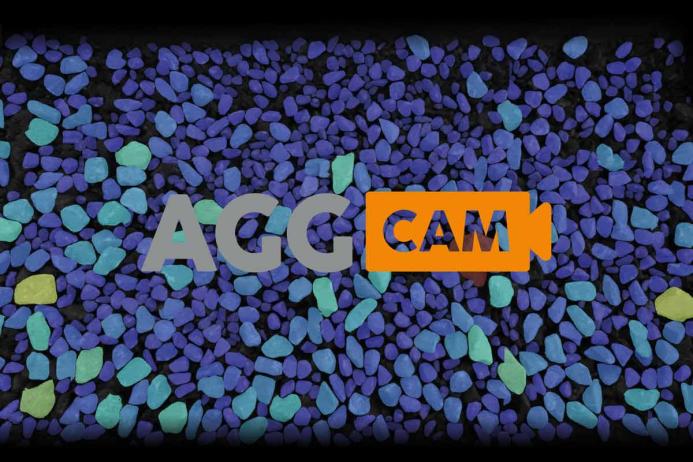
The initial AI project results
The research revealed that by improving blast fragmentation dumper loads could be increased by up to 10%. Furthermore, previous research has demonstrated improved fragmentation can increase processing plant energy efficiency by up to 20%, subsequently requiring less energy per tonne. Whilst the data-collection, analysis, and optimization process are still at an early-stage, indications are that, depending on site characteristics, total production cost savings of around £1 per tonne may be achievable as well as significant reductions in CO2.
Additionally, constant measuring of crusher conveyors using AggCAM identified non-productive operation of around 15%. This feedback led Tarmac to immediately review the efficiency of the supply to the primary crusher, resulting in an increase in the mobile plant fleet to ensure continuous efficient operation of the crusher.
FragMAP has allowed Tarmac to improve drill and blast efficiency by facilitating objective measurement of clear KPIs for blast quality.
Better-informed decisions
The use of AI at Mountsorrel and introduction of in-house drone data capture capability has not only empowered the Tarmac quarry management team to make better-informed decisions and challenge contractors to improve outcomes, but has also upskilled the team and fostered a deeper understanding of the processing system.
A genesis of change?
The project is testament to the value of the Institute of Quarrying’s Emerald Challenge, as it has inspired individuals and companies to think about and innovate in the environmental space.
Looking more widely, the project and its results demonstrate the power of AI, in combination with human ingenuity, to solve problems at speed and be the catalyst for genuine and valuable change.
Thomas Clifford (GEARS) and Oliver Kibble (Tarmac) will be presenting their work on ‘Blasting Down CO2’ to the IQ Derbyshire branch on Wednesday 11 September 2024 at Buxton Rugby Club. To book, visit: go.quarrying.org/blasting-down-co2-event
A fuller case study of the work undertaken is also available on the Institute of Quarrying website. Visit: go.quarrying.org/blasting-down-co2; or use the QR code below:

About the project team
GEARS: a research consultancy working within the UK quarrying industry to identify, develop, and implement innovative technologies to improve efficiency, sustainability, and safety. GEARS’ small team is comprised of industry experts in geology, geotechnics, and blast design. The consultancy has for several years been undertaking, in partnership with Tarmac, new blasting research, as well as providing Tarmac with specialist geological, geotechnical, and blasting services.
New Gradient: a specialist Artificial Intelligence (AI) and Machine Learning (ML) consultancy that collaborates with clients to understand their key operational challenges and develop bespoke AI/ML software solutions to improve efficiency and leverage commercial gains.
Tarmac (a CRH company): the UK’s leading sustainable building materials and construction solutions business.
Subscribe to Quarry Management, the monthly journal for the mineral products industry, to read articles before they appear on Agg-Net.com








